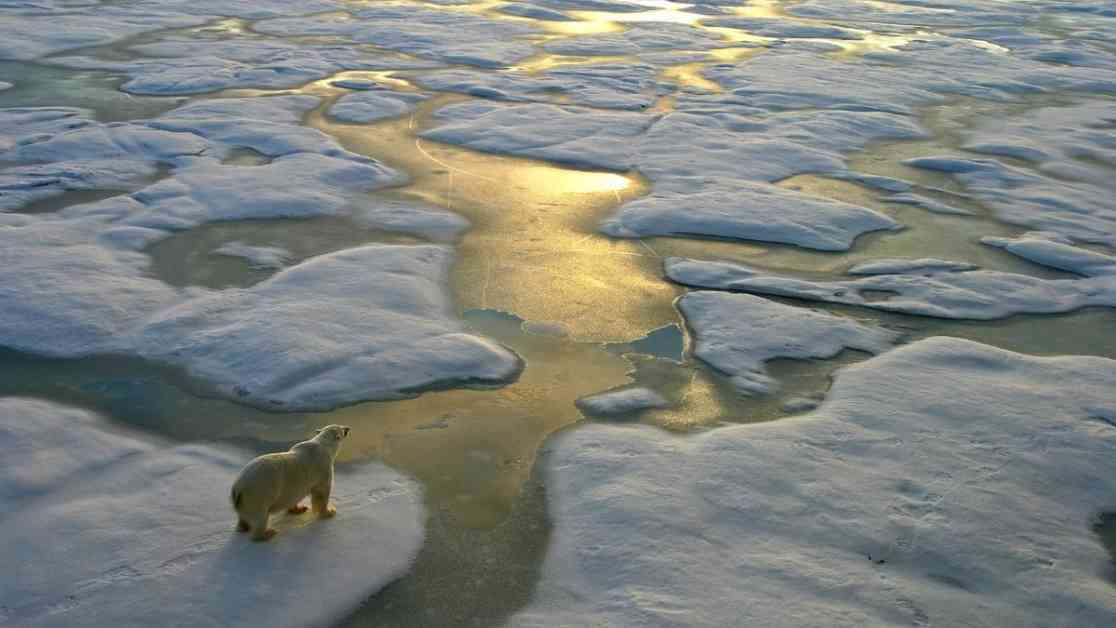Global Sea Ice Levels Reach Record Low
Last month marked the lowest global sea ice cover for any February on record, serving as a poignant reminder of the ongoing impact of climate change. Sea ice, which is the frozen seawater that sits atop the ocean’s surface, has been steadily declining as the planet warms. In February 2025, sea ice levels around the poles plummeted to an “all-time minimum,” a stark contrast to previous Februaries since records began in 1979. According to a statement from the European Union’s Copernicus Climate Change Service, this unprecedented event has significant implications for our planet.
Concerns Over Melting Sea Ice
Samantha Burgess, the strategic lead for climate at the European Centre for Medium-Range Weather Forecasts, emphasized the consequences of a warming world, particularly the melting sea ice. The record or near-record low sea ice cover at both poles has contributed to a global sea ice cover reaching an all-time minimum. This loss of sea ice has the potential to trigger a chain of adverse environmental impacts, affecting both human and wildlife communities that rely on it for survival. Moreover, the melting sea ice accelerates global warming by exposing the dark ocean beneath, which absorbs more sunlight and exacerbates the warming trend.
Copernicus Climate Change Service provides monthly updates on sea ice cover and global temperatures, drawing data from a myriad of sources including satellites, ships, aircraft, and weather stations worldwide. The latest report revealed that January 2025 was the warmest January on record, despite being in the cold phase of the El Niño climate pattern known as La Niña. Subsequently, February 2025 was declared the third warmest February on record, underscoring a troubling trend of increasing temperatures globally.
Impact on Global Climate Targets
In February 2025, the average temperature was noted to be 2.86 degrees Fahrenheit (1.59 Celsius) warmer than preindustrial levels, estimated as the average temperature between 1850 and 1900. This surpasses the target set by world leaders in the 2015 Paris Agreement, which aimed to limit warming to below 2.7 F (1.5 C) and well below 3.6 F (2 C). Despite these commitments, Earth has consistently exceeded the 2.7 F threshold, with February 2025 marking the 19th month out of the past 20 to breach this limit.
While temperatures can vary from year to year, the overarching trend of global warming remains evident. The previous year marked the hottest year on record since preindustrial levels, highlighting the urgency of addressing climate change. Although some regions experienced record-breaking cold, such as severe winter storms in the U.S., much of the world saw above-average temperatures. The Arctic, in particular, recorded extreme warming, with temperatures soaring 36 F (20 C) above normal at the North Pole on Feb. 2.
Climate change poses a significant threat to billions of people globally, manifesting in various ways such as wildfires, rising sea levels, and agricultural disruptions. The heightened rate of warming in the Arctic, coupled with the drastic decline in sea ice levels, underscores the urgent need for collective action to combat climate change. As the planet continues to warm, the repercussions of our actions on the environment become increasingly apparent, emphasizing the critical importance of sustainable practices and mitigation efforts.
Please, complete the meaning of the sentence.










